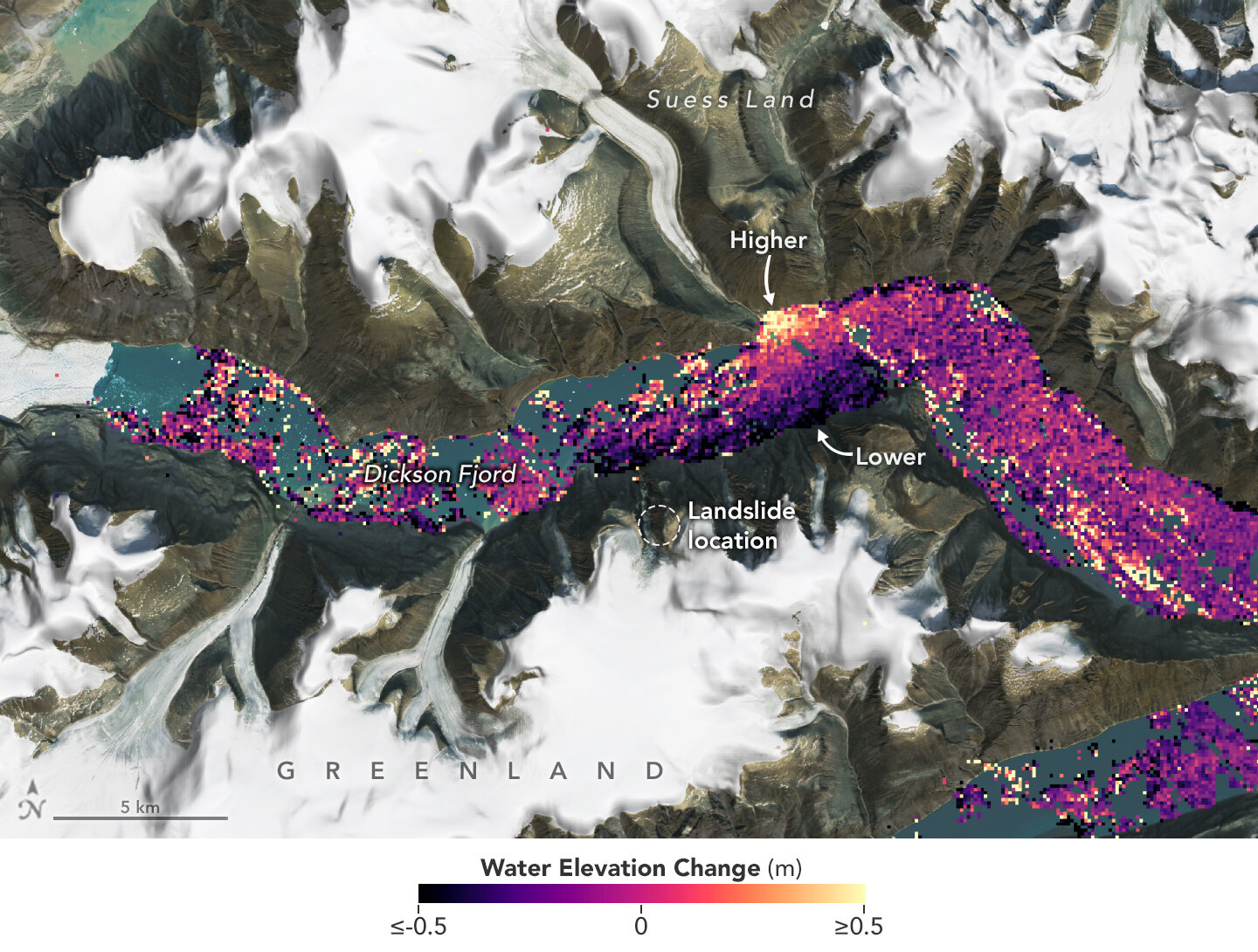In 2023, a powerful earthquake struck the coast of Greenland. It caused a tsunami, which led to considerable destruction on the coast of the giant island. Recently, scientists used SWOT satellite data to estimate how catastrophic the impact of the disaster actually was.

Natural cataclysm seen by satellite
The International Surface Water and Ocean Topography (SWOT) satellite mission, a joint mission of NASA and France’s CNES National Center for Space Research, has detected the unique contours of a tsunami that ran along the steep walls of a fjord in Greenland in September 2023.
Spawned by a massive landslide, the tsunami caused a seismic rumble that echoed around the world for nine days. An international research team of seismologists, geophysicists and oceanographers recently reported the event after a year of data analysis.
The SWOT satellite collected data on water levels in Dickson Fjord on September 17, 2023, the day after the initial collapse and tsunami. The data were compared to measurements taken under normal conditions a few weeks earlier, on August 6, 2023.
In the data visualization (above), colors closer to the red end of the scale indicate higher water levels and blue colors indicate lower than normal levels. The data indicate that water levels at some points along the north side of the fjord were 4 feet (1.2 m) higher than on the south side.
In a paper published recently in the journal Science, researchers traced the seismic signal to a tsunami that began with more than 880 million cubic feet of rock and ice (25 million m³) falling into the Dickson Fjord. As part of a network of canals on the east coast of Greenland, the fjord is about 1,772 feet (540 m) deep and 1.7 miles (2.7 km) wide, with walls over 6,000 feet (1,830 m) high.
Record of seismic shocks
Away from the open ocean, in a confined space, the energy of the tsunami’s motion had little opportunity to dissipate, so the wave moved back and forth about every 90 seconds for nine days. This caused shocks recorded by seismic instruments thousands of miles offshore.
From an altitude of about 560 miles (900 kilometers), SWOT uses its sophisticated Ka-band radar interferometer (KaRIn) to measure the height of nearly all water on Earth’s surface, including the ocean and freshwater lakes, reservoirs, and rivers.
SWOT satellite capabilities
“This observation also shows SWOT’s ability to monitor hazards, potentially helping in disaster preparedness and risk reduction,” said SWOT program scientist Nadya Vinogradova Shiffer of NASA headquarters in Washington. It turns out it can also see fjords.
“The KaRIn radar’s resolution was fine enough to make observations between the relatively narrow walls of the fjord,” said Lee-Lueng Fu, SWOT project scientist. “The footprint of the conventional altimeters used to measure ocean height is too large to resolve such a small body of water.”
Launched in December 2022 from Vandenberg Space Force Base in California, SWOT is now in the operational phase, collecting data that will be used for research and other purposes.
Provided by phys.org


